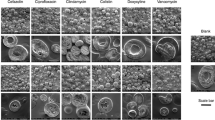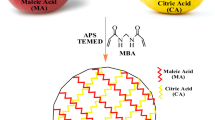Abstract
Purpose. To study the uptake of biodegradable microparticles in Caco-2 cells.
Methods. Biodegradable microparticles of polylactic polyglycolic acid co-polymer (PLGA 50:50) of mean diameters 0.1 μm, 1 μm, and 10 μm containing bovine serum albumin as a model protein and 6-coumarin as a fluorescent marker were formulated by a multiple emulsion technique. The Caco-2 cell monolayers were incubated with each diameter microparticles (100 μg/ml) for two hours. The microparticle uptake in Caco-2 cells was studied by confocal microscopy and also by quantitating the 6-coumarin content of the microparticles taken up by the cells. The effects of microparticle concentration, and incubation time and temperature on microparticle cell uptake were also studied.
Results. The study demonstrated that the Caco-2 cell microparticle uptake significantly depends upon the microparticle diameter. The 0.1 μm diameter microparticles had 2.5 fold greater uptake on the weight basis than the 1 μm and 6 fold greater than the 10 μm diameter microparticles. Similarly in terms of number the uptake of 0.1 μm diameter microparticles was 2.7 × 103 fold greater than the 1 μm and 6.7 × 106 greater than the 10 μm diameter microparticles. The efficiency of uptake of 0.1 μm diameter microparticles at 100 μg/ml concentration was 41% compared to 15% and 6% for the 1 μm and the 10 μm diameter microparticles, respectively. The Caco-2 cell microparticle (0.1 μm) uptake increased with concentration in the range of 100 μg/ml to 500 μg/ml which then reached a plateau at higher concentration. The uptake of microparticles increased with incubation time, reaching a steady state at two hours. The uptake was greater at an incubation temperature of 37°C compared to at 4°C.
Conclusions. The Caco-2 cell microparticle uptake was microparticle diameter, concentration, and incubation time and temperature dependent. The small diameter microparticles (0.1 μm) had significantly greater uptake compared to larger diameter microparticles. The results thus suggest that the mechanism of uptake of microparticles in Caco-2 cell is particle diameter dependent. Caco-2 cells are used as an in vitro model for gastrointestinal uptake, and therefore the results obtained in these studies could be of significant importance in optimizing the microparticle-based oral drug delivery systems.
Similar content being viewed by others
REFERENCES
J. Kreuter. J. Anat. 189:503–505, 1996.
R. Bodmeier, H. G. Chem, and O. Paeratakul. Pharm. Res. 6:413–417 (1989).
C. Michel, M. Aprahamain, L. Defontaine, P. Couvreur, and C. Damge. J. Pharm. Pharmacol. 43:1–5 (1991).
A. T. Florence, A. M. Hillery, N. Hussain, and P. U. Jani. J. Controlled Release 36:39–46 (1995).
D. Shah and W. C. Shen. J. Pharm. Sci. 85:1306–1311 (1996).
P. Maincent, R. Le Verge, P. A. Sado, P. Couvreur, and J. P. Devissaguet. J. Pharm. Sci. 75:955–958 (1986).
P. A. Kramer and T. Burnstein. Life Sci. 19:515–520 (1976).
O. Strannegard and A. Yurchison. Int. Arch. Allergy 35:579–590 (1969).
J. H. Eldridge, C. J. Hammond, J. A. Muelbroek, J. K. Staas, R. M. Gilley, and T. R. Tice. J. Controlled Release 11:205–214 (1990).
C. A. Gilligan and A. Li Wan Po. Int. J. Pharm. 75:1–24 (1991).
A. Li Wan Po, E. Rogers, M. Shepphard, and E. M. Scott. Adv. Drug. Del. Rev. 18:101–109 (1995).
I. J. Hidalgo and J. B. Li. Adv. Drug. Del. Rev. 22:53–66 (1996).
C.-M. Lehr and V. H. L. Lee. Pharm. Res. 10(12):1796–1799 (1993).
K. L. Audus, R. L. Bartel, I. J. Hidalgo, and R. T. Borchardt. Pharm. Res. 7(5):435–451 (1990).
M. P. Desai, V. Labhasetwar, G. L. Amidon, and R. J. Levy. Pharm. Res. 13:1838–1845 (1996).
R. H. Muller. Colloidal Carriers for Controlled Drug Delivery and Targeting CRC Press, Boston, 1991.
V. Labhasetwar, B. Chen, D. W. M. Muller, J. Bonadio, K. Ciftci, K. March, and R. J. Levy. Adv Drug Del Rev. 24:109–120 (1997).
P. Artursson. J. Pharm. Sci. 79(6):476–482 (1990).
D. C. Kim, P. S. Burton, and R. T. Borchardt. Pharm. Res. 10(12):1710–1714 (1993).
P. Artursson and J. Karlsson. Biochem. Biophys. Res. Comm. 175(3):880–885 (1991).
G. F. Beck, W. J. Irwin, P. L. Nicklin, and S. Akhtar. Pharm. Res. 13(7):1028–1036 (1996).
E. Walter, S. Janich, B. J. Roessler, J. M. Hilfinger, and G. L. Amidon. J. Pharm. Sci. 85:1070–1076 (1996).
A. M. Hillery, P. U. Jani, and A. T. Florence. J. Drug Targetting 2:151–156 (1994).
M. Aprahamian, C. Michel, W. Humbert, J. Devissaguet, and C. Damge. Biol. Cell 61:69–76 (1987).
P. Couvreur and F. Puisieux. Adv. Drug. Del. Rev. 10:141–162 (1993).
J. Kreuter. Adv. Drug. Del. Rev. 7:71–86 (1991).
J. Mastecky, Z. Moldoveanu, M. Novak, W.-Q Huang, R. M. Gilley, J. K. Staas, D. Schafer, and R. W. Compans. J. Controlled Release 28:131–141 (1994).
M. Manganaro, P. L. Ogra, and P. B. Ernst. Int. Arch. Allerg. Immuno. 103:223–233 (1994).
K. E. Carr, R. A. Hazzard, S. Reid, and G. M. Hodges. Pharm. Res. 13:1205–1209 (1996).
T. Uchida and S. Goto. Bio. Pharm. Bull. 17:1272–1276 (1994).
T. H. Ermak, E. P. Dougherty, H. R. Bhagat, Z. Kabok, and J. Pappo. Cell Tissue Res. 279:433–436 (1995).
J. C. Leroux, R. M. Cozens, J. L. Roesel, B. Galli, E. Doelker, and R. Gurny. Pharm. Res. 13:485–487 (1996).
A. M. Hillery, I. Toth, and A. T. Florence. J. Controlled Release 42:65–73 (1996).
H. Sato, Y. Sugiyama, A. Tsuji, and I. Horikoshai. Adv. Drug. Del. Rev. 19:445–467 (1996).
Author information
Authors and Affiliations
Corresponding author
Rights and permissions
About this article
Cite this article
Desai, M.P., Labhasetwar, V., Walter, E. et al. The Mechanism of Uptake of Biodegradable Microparticles in Caco-2 Cells Is Size Dependent. Pharm Res 14, 1568–1573 (1997). https://doi.org/10.1023/A:1012126301290
Issue Date:
DOI: https://doi.org/10.1023/A:1012126301290




